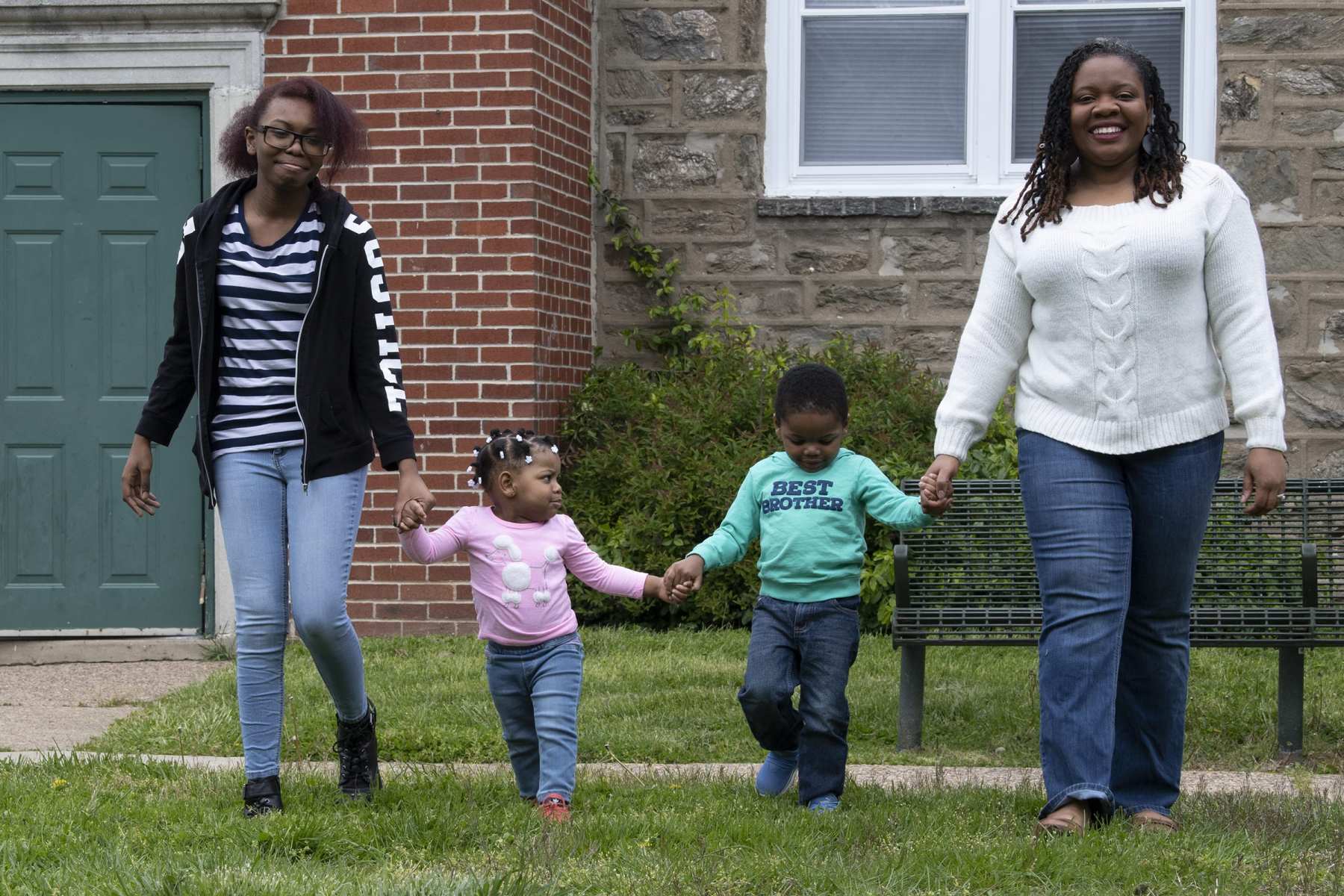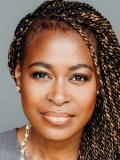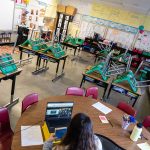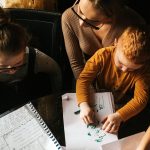This collection, Portraits of a Pandemic, is a co-production between The Philadelphia Inquirer and The 19th. This work is supported by the Pulitzer Center and The Lenfest Institute.
Kyana Hopkins-Thomas smiled when she thought about the last time she was with her history students at Paul Robeson High School in West Philadelphia, helping them with their projects on Reconstruction and world religion.
Her classes sat not in groups, learning to collaborate. They prepared presentations that would help them become more confident public speakers. Hopkins-Thomas believed she was just beginning to hit her stride in her first year at Robeson when the coronavirus brought the momentum she’d built with 150 students to a halt.
“I felt like I was just getting the hang of it,” said Hopkins-Thomas, 38, who has taught in schools across the city for more than a decade, and is also a full-time doctoral student in educational leadership, working on her dissertation. “I had to reorganize things.”
The pandemic is exacerbating long-existing inequities in all areas of society, but perhaps nowhere more acutely than in education. While the coronavirus has changed life for all Americans, the crisis has been overwhelming for minority and poor communities, whether they become sick or not.
According to the National Center on Education Statistics, more than 75% of public-school teachers in America are women — who also are the majority of caregivers in this country. In Philadelphia, about 70% of teachers are women.
Philadelphia is home to the country’s fifth-largest school district, with more than 200,000 students and 342 schools. About eight in 10 students are Black, Latino or Asian, and 14% are White. The district closed March 13 and will remain closed for the rest of the school year.
The disparities are stark for Hopkins-Thomas’ class.
For weeks, she didn’t teach at all: Many students across the city lacked access to a computer or the internet. Even now, those who can get online still don’t know how to use the teaching software.
The School District has distributed 75,000 laptops since the pandemic started, with plans to make more available to students in need. The district is also providing online resources to help parents and students use laptops and online tools.
Still, Hopkins-Thomas estimates that she has reached only about a third of her 150 students, with about 10 unable to get online in each of her five classes. More than 20,000 students in Philadelphia have no internet-access subscription.
“A lot of things I had to stop doing,” Hopkins-Thomas said. “When this pandemic happened, I lost touch with a lot of my students. It’s an equity issue. I don’t have a way of contacting them.”
She said she has yet to hear from any of her five seniors. She worries about those who may lose the passion for education that she worked to ignite.
Even now, Hopkins-Thomas said, her students who are online aren’t familiar with the teaching technology the district is using as a stand-in for in-person learning.
“We were at such a good place before all this happened,” said Hopkins-Thomas, who aims to prepare her students for college. “I had it all planned out, where I wanted them to be, what I wanted them to be able to do. I’m hoping that they’re OK and that they’re doing well.”
Also on her mind: her students who may not be safe at home, who are missing the teacher who cares about them and listens to them, and who sees them as more than just their grades.
“In the background, I can hear yelling and cussing,” she said. “For a lot of our students, home is not a quiet place, home is not somewhere they want to be, and now they’re stuck there, and I don’t know how to fix that. And that’s hard when you’re somebody that wants to fix things for people. All I can do is encourage them and let them know that I’m here.”
Nearly all of Philadelphia public school students are eligible for free or reduced-price meals. In response to concerns about food insecurity, 49 food distribution centers are open across the city, and families are eligible for one meal kit with five breakfasts and five lunches per child. The district has distributed more than a million meals in the last month.
“We are well aware of the extraordinary challenges facing many of our students and their families. This situation has only added to those challenges,” the district said in a statement, noting supporters could contribute to its fund.”From working to prepare meal kits to getting students Chromebooks to preparing a comprehensive digital learning plan that ensures opportunities for learning and instruction, our district has answered a call to action, and we will continue to do whatever we can to keep that safety net intact for those who need it most.”
For Hopkins-Thomas, there’s been disruption at home, too. As a married mother of a 15-year-old, a 2-year-old, and a 1-year-old, days that once began at 5 a.m. and ended close to midnight now start four hours later, as she doesn’t have to get the kids ready and out the door. But it’s had a ripple effect: The little ones go to bed later, which leaves less time for her doctoral studies.
Her teenage daughter, a sophomore, talks to friends on the phone, but is slowly becoming stir-crazy. Hopkins-Thomas’ baby was sick this week, which meant a telehealth appointment rather than risking a hospital visit.
Hopkins-Thomas is also grieving the loss of an uncle who died this week from the coronavirus in his nursing home in the city. More than half the state’s fatalities due to the illness have been in nursing homes.
For the teacher and mother, some days have felt unbearable.
“There’s a lot of having my own breakdown sessions, not in front of the kids,” she said. “Just to get myself together, then I come back and reassess how we’re going to do things. If it wasn’t for the level of faith I have, I don’t think I would be at this place. I still talk to God. That is definitely holding me.”






